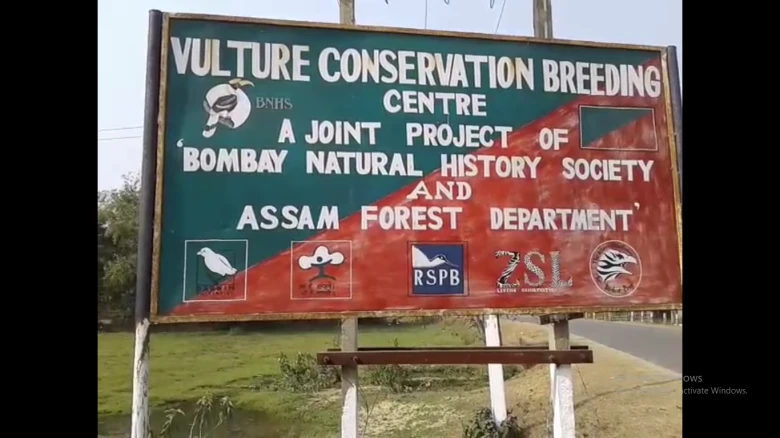Regional

The extensive use of medications such as diclofenac is thought to be a key contributor to vulture population declines...
Digital Desk: Seven Himalayan vultures met a tragic end in Palashbari Jaji Ganakpara, Kamrup on Saturday, highlighting the dangerous state of this endangered species. The incident highlights the ongoing threat to vultures due to public ignorance and irresponsible actions.
The vultures died after consuming the carcasses (remains of a dead animal) left in open fields, suspected to have been contaminated with diclofenac, a deadly drug. However, investigations revealed that the carcasses were tainted with Furadan, a chemical used by villagers to prevent scavenging street dogs, as per the reports.
This misstep resulted in the deaths of seven vultures, with thirteen more battling critical conditions at the Vulture Conservation Breeding Centre. Prompt intervention by a medical team from the Rani Belguri Vulture Conservation Centre saved over twenty ailing vultures. Concurrently, teams from the Loharghat Forest Office swiftly responded to the scene, emphasizing the collaborative effort needed to address such crises.
The extensive use of medications such as diclofenac, a nonsteroidal anti-inflammatory drug (NSAID) that was once frequently given to livestock, is thought to be a key contributor to vulture population declines. The medication is thought to have been passed on to vultures through the meat of dead cattle that were administered diclofenac in their final days of life, resulting in renal failure in vultures. Diclofenac was banned in 2010 in India.
However, various other deadly chemicals in the form of pesticides and other farming causes, like furadan, a 3% granular formulation of carbofuran, are widely used. These medicines are used by villagers for various reasons, which in turn harm other animals. The incident underscores the urgent need for public awareness campaigns and responsible disposal practices to safeguard vulnerable wildlife populations.
The declining population of vultures can be understood by comparing the data between the 1980s and 2017. In the early 1980s, three species of Gyps vultures (the white-rumped vulture, the long-billed vulture, and the slender-billed vulture) were projected to have a combined population of 40 million in South Asia, but by 2017, the total population had dropped to 19,000 (6,000, 12,000, and 1,000, respectively).
Leave A Comment